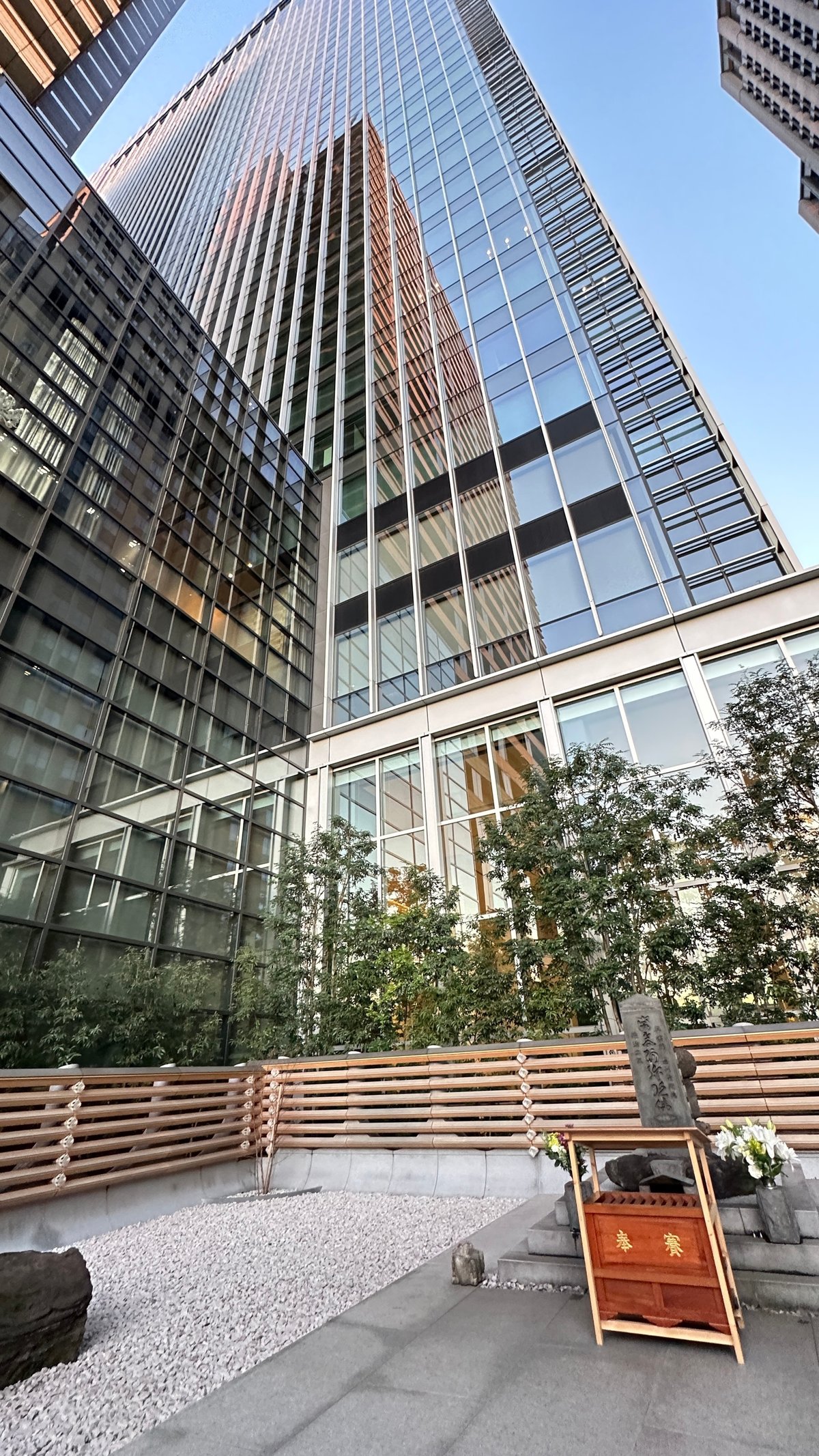
【東京時間.jp】第1回 平将門の乱: 日本歴史の転換点
崇徳天皇、菅原道真、平将門は日本の三大怨霊として知られ、非業の死を遂げた歴史上の人物です。平将門の評価は時代によって大きく変わり、一時は朝敵と見なされたものの、後に尊敬される存在へと変貌し、明治時代には反逆者とされ、戦後には英雄視されるなど、見方が変化しています。特に興味深いのは、現代でも多くの人々が平将門の怨霊やその呪いを恐れていることです。平将門の乱や怨霊伝説、これらが現代文化や社会に与える影響を探究することは魅力的であり、平将門が反逆者にとどまらず、その時代の政治的、社会的背景を反映した人物であることが明らかです。

平将門に関する場所を巡礼することは、その歴史的、文化的意義を体験し、恩恵を受ける機会となるでしょう。そんな将門にまつわることを体験し、その恩恵を受けるためにも、首塚がある大手町をはじめ、彼にまつわる地を巡礼するのはいかがでしょうか。


平将門の乱の背景と展開
平将門の乱は、平安時代後期の日本における中央と地方の緊張が高まっていた時期に起こりました。地方の豪族や新興の武士階級は、中央政権による統制に反発し、自らの権力基盤を固めようとしていました。将門自身は、強力な武士団を率い、関東地方における独自の支配権を確立しようと試みました。彼の野心は、新皇を名乗り、独立した政権を樹立することにまで及びましたが、この動きは朝廷によって迅速に鎮圧されました。将門の乱の失敗は、後の武士階級の台頭と、中央集権体制と地方勢力との間の緊張関係の継続を示唆しています。


将門の怨霊伝説とその影響
平将門の死後、彼の怨霊が関東地方に災いをもたらすという伝説が広まりました。将門の首塚が設置された場所は、特に祟りが強いとされ、多くの超自然的な現象や不幸な出来事が彼の霊の仕業とされてきました。しかし、これらの伝説は時代が下るにつれて、畏怖の対象から文化的な遺産へと変化し、将門を祀る神社は参拝者に対して様々な形でのご利益を提供する場所となりました。この変化は、歴史的人物や伝説に対する現代社会の捉え方が、過去の事件を単なる負の遺産ではなく、学びや霊的な成長の源泉として再評価していることを示しています。


現代社会における平将門の遺産
現代において、平将門の伝説は、様々なメディアや文化作品を通じて再解釈され、新たな意味を持ち続けています。大河ドラマや小説、マンガなどでは、彼の人物像が多角的に描かれ、時には英雄として、時には悲劇の主人公として表現されます。これらの作品は、平将門という人物が持つ普遍的な魅力と、彼の物語が現代の人々にも共鳴する理由を浮き彫りにしています。さらに、彼を祀る神社や首塚を訪れることは、歴史的な興味だけでなく、自己啓発や精神的な慰めを求める現代人にとっても重要な意味を持つようになっています。

平将門の物語の現代的意義
平将門の物語は、単に過去の反乱の記録を超えて、現代社会においても多くの重要なテーマを提示しています。彼の野心、勇気、そして最終的な失敗は、権力、野心、そして個人と社会との関係についての普遍的な問いを投げかけています。また、将門の怨霊としての伝説は、死後も続く影響力と、物語が文化や信仰に与える影響の持続性を示しています。これらの要素は、平将門を単なる歴史上の人物から、現代にも影響を与える文化的アイコンへと昇華させています。

平将門とその伝説は、過去と現在、そして未来をつなぐ架け橋として機能しています。彼の物語は、歴史の教訓、文化的遺産、そして個人と社会の関係性を探求するための貴重な資源であり続けます。現代社会における平将門の再評価は、歴史的人物が時代を超えてどのように意味を持ち続けるか、そして私たちが彼らの遺産からどのような教訓を学び取ることができるかを示しています。

追記:神田明神にビジネスマンが訪れる理由
「神田明神」は、730年に千代田区大手町で大己貴命(大国様)をお祀りすることで始まりました。14世紀の始めには、平将門の呪いとされる疫病が広まりましたが、この時期、「将門の首塚」のそばで平将門の魂を慰め、疫病を鎮めた神田明神によって、1309年に平将門が祭られるようになりました。
江戸時代には平将門を深く敬う風潮がありましたが、明治7年、明治天皇の参拝時に反逆者の将門を祭っていることが適切でないと見なされ、将門は祭神から除外されました。その代わりに少彦名命(恵比寿神)が祭られ、将門は境内の摂社に移されました(左遷?)
昭和時代に入ると、将門を主祭神として復帰させるための請願が行われ、NHKの大河ドラマ「風と雲と虹と」の放映と共に、その動きは勢いを増しました。結果、昭和59年には将門が本社に戻る栄誉を得て、出世の神としての信仰を集めるようになり、多くのビジネスマンが参拝に訪れるようになりました。
Emperor Sutoku, Sugawara no Michizane, and Taira no Masakado are known as the three great wrathful spirits of Japan, historical figures who met untimely deaths. The evaluation of Taira no Masakado has significantly changed over the ages; once viewed as an enemy of the court, he later transformed into a respected figure. In the Meiji era, he was labeled a rebel, and post-war, viewed as a hero, indicating a shift in perspectives. Intriguingly, many people today still fear the wrathful spirit and curse of Taira no Masakado. Exploring the influence of Masakado's rebellion and his vengeful spirit legend on modern culture and society reveals his significance beyond being a mere rebel, reflecting the political and social backdrop of his era. Pilgrimage to sites related to him, including his memorial in Otemachi, offers a chance to experience his historical and cultural significance and receive blessings.
Background and Development of Taira no Masakado's Rebellion
Taira no Masakado's rebellion occurred during the late Heian period in Japan, a time of escalating tensions between the central government and regional forces. Local aristocrats and the emerging samurai class resisted central control, seeking to solidify their power bases. Masakado led a powerful group of warriors, attempting to establish his own rule in the Kanto region. His ambition extended to declaring himself the new emperor and establishing an independent government, which was swiftly suppressed by the imperial court. The failure of Masakado's rebellion suggests the rise of the samurai class and the ongoing tension between central authority and regional powers.
The Legend of Masakado's Wrathful Spirit and Its Impact
After his death, legends of Masakado's wrathful spirit bringing calamity to the Kanto region spread widely. The site of his memorial was particularly feared for its strong curse, with many supernatural phenomena and misfortunes attributed to his spirit. However, these legends have evolved over time from objects of fear to cultural heritage, with shrines dedicated to Masakado offering various benefits to visitors. This shift indicates a modern societal reevaluation of historical figures and legends, not merely as negative legacies but as sources of learning and spiritual growth.
Taira no Masakado's Legacy in Contemporary Society
In modern times, the legend of Taira no Masakado continues to be reinterpreted through various media and cultural works, maintaining its relevance. Dramas, novels, and manga depict him from multiple perspectives, sometimes as a hero and sometimes as a tragic figure. These works highlight the universal appeal of Masakado and why his story resonates with contemporary audiences. Visiting shrines dedicated to him and his memorial not only serves historical interest but also offers self-improvement and spiritual solace to modern individuals.
Contemporary Significance of Taira no Masakado's Story
The story of Taira no Masakado transcends a mere record of past rebellion, presenting numerous significant themes for contemporary society. His ambition, courage, and ultimate failure raise universal questions about power, ambition, and the individual's relationship with society. The legend of Masakado's vengeful spirit demonstrates the enduring impact of narratives on culture and belief systems. These elements elevate Masakado from a historical figure to a cultural icon influencing the modern world.
Taira no Masakado and his legends serve as a bridge connecting the past, present, and future. His story remains a valuable resource for exploring historical lessons, cultural heritage, and the dynamics between individuals and society. The modern reevaluation of Taira no Masakado illustrates how historical figures continue to hold significance across ages and the lessons we can learn from their legacies.
